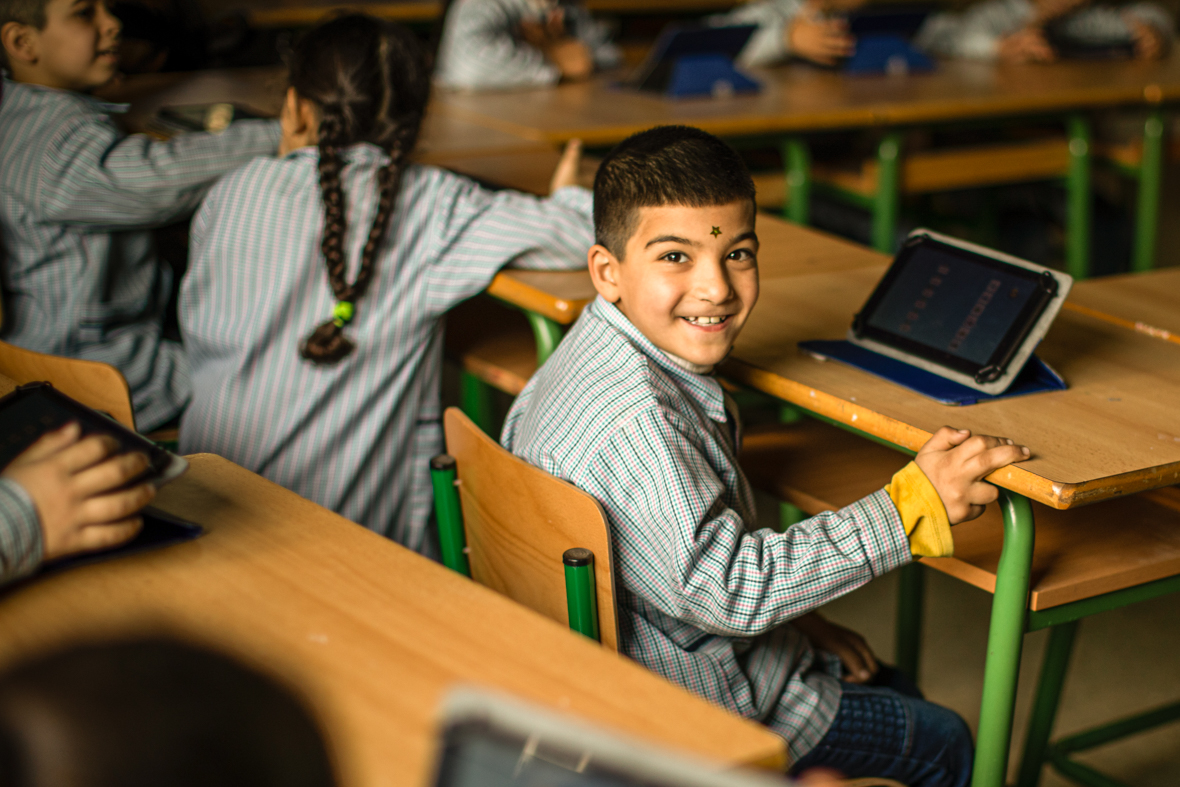
Thousands more children to get education in war-torn South Sudan
Child soldiers, Children in conflicts, Education funding, Education in emergencies
The Back-To-Learning campaign is getting children into school Picture: UNICEF South Sudan
Extra funding means a campaign to provide education in war-torn South Sudan has been extended to help thousands more children and adolescents into school.
The Back-to-Learning initiative helps those who have never set foot in a classroom or who dropped out of school because of factors such as poverty, child marriage, gender discrimination or conflict.
The Greater Pibor area will be the latest region to benefit from the programme run by the United Nations children’s agency UNICEF – and demobilised child soldiers will be among those helped.
Jonathan Veitch, UNICEF’s Representative in South Sudan, said: “Before the current conflict, South Sudan was already one of the most difficult places in the world to be a child. Fewer than half its children attended school and just one in 10 completed primary school.”
Student at launch of Back-to-Learning at Juba in February Picture: UNICEF/Campeanu
Almost half of the 800,000 children who have been internally displaced by conflict in the world’s newest country have dropped out of education. Yesterday South Sudan President Salva Kiir signed a peace deal to end the 20-month conflict with rebels – now the international community is waiting to see if that truce holds.
UNICEF launched Back-to-Learning earlier this year and already 160,000 children have benefited, with the target being to help 400,000 children into education.
Conflict has deprived Pibor, one of the least developed areas of the country, of the education resources it needs. Fighting has also forced out-of-school girls into early marriage, while boys as young as 14 joined or were conscripted into armed groups.
The announcement of an extra $6 million from the United States government through USAID takes its total grant to UNICEF for emergency education in South Sudan over two years to $23.5 million.
Delighted to be with school friends in Juba Picture: UNICEF/Campeanu
The additional money means Pibor is added to the BTL initiative, which is supported by the South Sudan government, UN agencies, NGOs, donors and local communities, including thousands of teachers, community leaders and parents.
US Ambassador to South Sudan Molly Phee said: “USAID has been supporting education in South Sudan since the liberation struggle. Educating the next generation is the foundation of a peaceful and prosperous future for any country. But for decades, the children of South Sudan have had to forfeit the opportunity to learn to read and write because of warfare.”
Back-to-Learning commits $100 for every child returning to the classroom. The initiative is supported by the US, Japan, Norway, Canada, the EU and the UK Department for International Development.
Children play at Bentiu site for internally displaced people in Unity State Picture UNICEF/Rich
Funding for education in emergencies, including conflicts like the one in South Sudan, has been a major talking point in recent months. More than 40 of the world’s leading charities and campaign organisations joined forces with A World at School to call on world leaders to create an urgent fund.
At the Oslo Education Summit in July, the Global Humanitarian Platform and Fund for Education in Emergencies was agreed. Leaders decided to move forward on developing a system to improve how aid is provided in emergencies and urgently address the gap in funding of education in emergencies.
Last month a report by Save The Children revealed that children across South Sudan are desperate to get back into school.
More news

